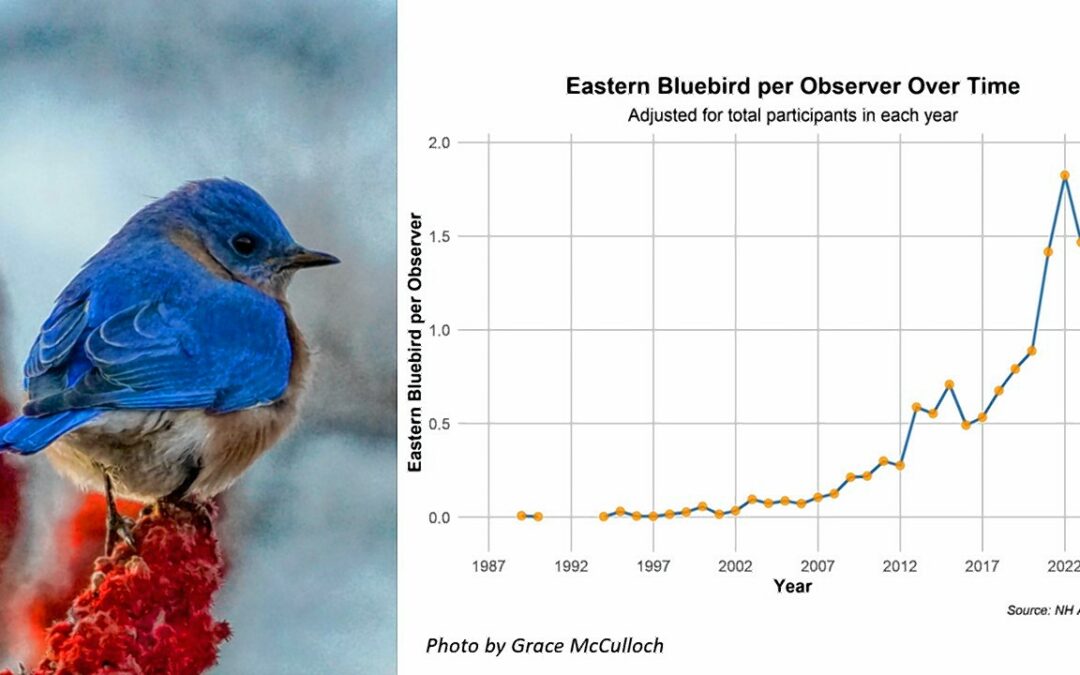The annual Backyard Winter Bird Survey takes place this coming weekend, the 38th chance for citizen scientists to contribute to the nation’s knowledge base without having to go anywhere.
The survey, overseen by New Hampshire Audubon, drew more than 1,500 participants last year. It’s open to anybody, whether seasoned birdwatcher or complete newcomer. Just count the birds by species in your yard or at your bird feeder for any amount of time on Saturday and Sunday, Feb. 8 and 9, then submit your data online.
The survey has seen what NH Audubon called “dramatic changes both in our winters (which are getting warmer) and the birds that call New Hampshire home for the winter.” For example, 25 years ago almost no Eastern Bluebirds stayed in the state for the winter but now they’re regularly spotted in the state during colder months. The survey has also recorded Red-bellied Woodpeckers and Carolina Wrens moving into the state as well as steep declines in other species, including Evening Grosbeaks.
“This is where the value of this long-term dataset is realized, allowing us to monitor bird populations and identify critical trends,” NH Audubon wrote in a release.
Last year’s survey recorded a record high count of Pine Warblers, a species that typically winters farther south and record numbers of Turkey Vultures, which are expanding their winter range northward. One surprise was the first-ever Yellow-throated Warbler recorded in the survey. It typically nests no farther north than New Jersey and usually migrates to southern Florida or the Caribbean.
Each year, Dr. Pamela Hunt, a Senior Biologist at NH Audubon, speculates on what we might see in the upcoming survey. This year, she predicts high counts of Red-breasted Nuthatches, a species that often moves south into New Hampshire in response to dwindling food supplies up north. Additionally, she anticipates strong showings of favorites like Red-bellied Woodpeckers, Carolina Wrens and Eastern Bluebirds.
See www.nhaudubon.org/bwbs for more information, including tips for identifying winter birds, full survey instructions, printable tally sheets, and instructions for submitting data online.
Last year, the top five species on the survey were: American Goldfinch (9,925 birds counted); Dark-eyed Junco (9,665); Mourning Dove (4,695); Black-capped Chickadee (4,395); Blue Jay (4,373).


 Return to the Concord Monitor
Return to the Concord Monitor
I would love to take part in the backyard bird count